2 easy Pandan Rice recipes: I show you how to cook a fragrant white rice or a pandan-flavored, olive-green, creamy rice using 2-3 simple ingredients.
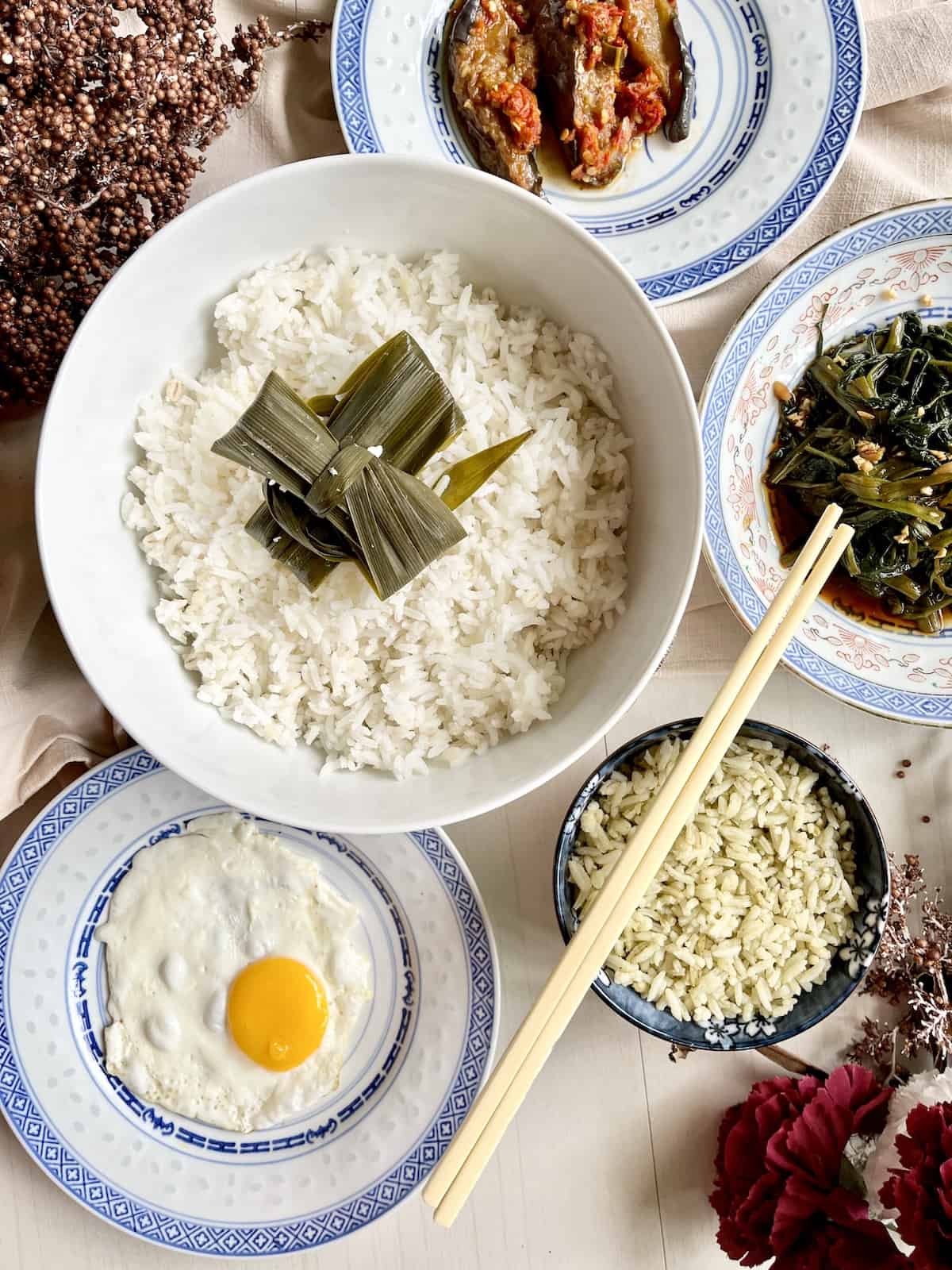
Jump to:
Why Make This
- Pandan rice (Nasi Pandan) is very aromatic: Pandan, also known as screwpine, is a fragrant tropical plant whose leaves are used to flavor many South East Asian dishes from savory Nasi Lemak to pandan rice pudding and sweet Kueh Dadar. The flavor it imparts is nutty, warm, coconut-y and sometimes likened to vanilla.
- It's super easy to make: the easiest way is to simply throw a few pandan leaves in the pot when cooking white rice! Add a few more ingredients and you get sumptuous Nasi Lemak rice, which is often eaten for breakfast in Singapore and Malaysia. Or serve with homemade chicken curry with pumpkin!
- You only need 2-3 simple ingredients: Pandan leaves, rice and, if going for a creamy and rich rice, coconut cream.
What is Pandan Rice ?
At its most basic, it is white rice that has been flavored with the fragrance of tropical pandan leaves. The resulting cooked rice is much more aromatic but doesn't taste very different from regular cooked rice.
There is a richer version in which the rice is cooked with pandan, coconut milk and sometimes other herbs to form a "lemak" rice or "Fat rice." This is the creamy and nutty rice that we get in Nasi Lemak
Note: there is also a variety of white rice that naturally has the fragrance of pandan leaves called Pandan Rice.
Ingredients
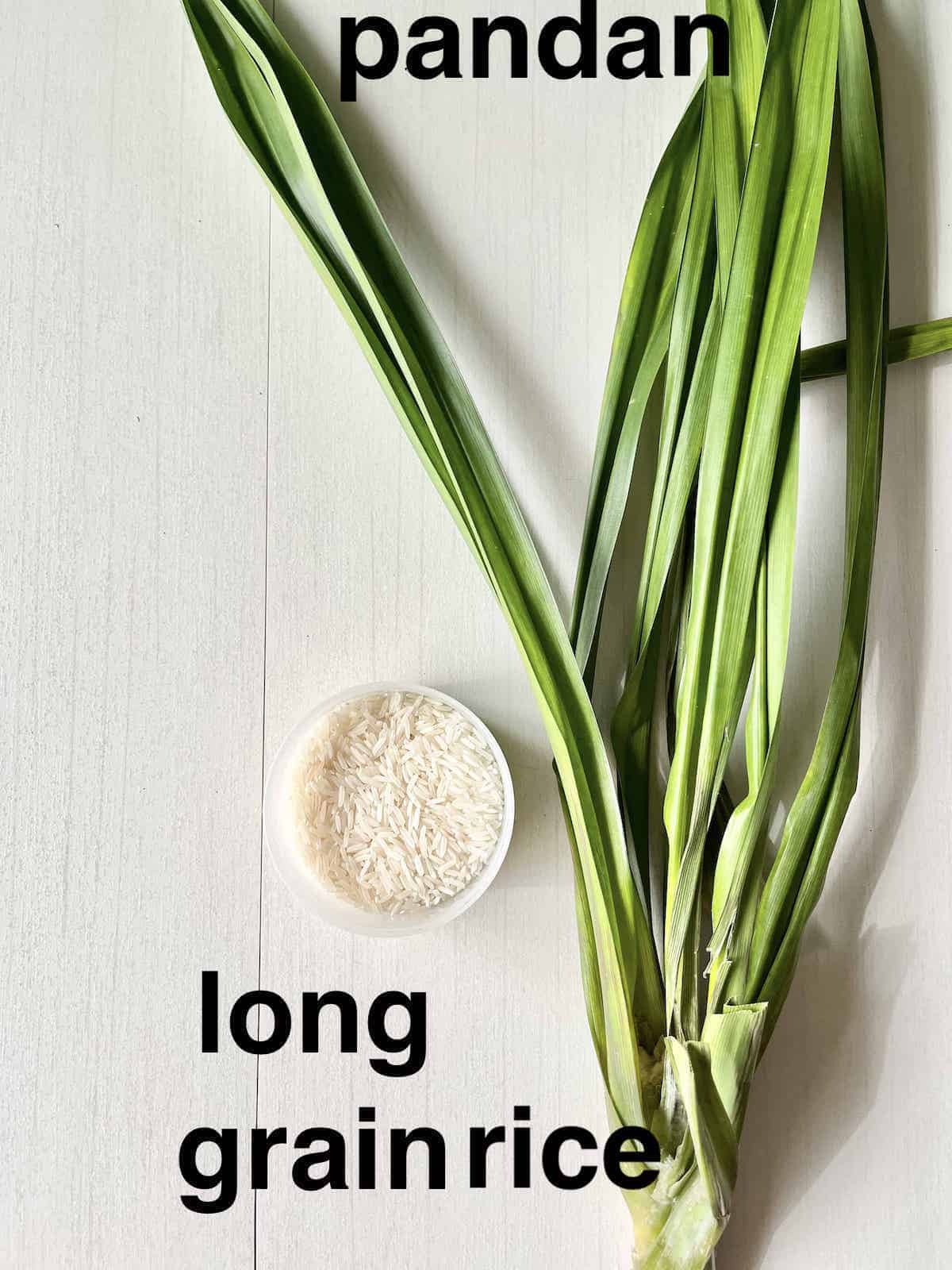
You will need:
- white rice: This recipe uses long-grain jasmine rice. (1 of the most popular Nasi Lemak stalls in Singapore swears by Basmati Rice though.) Although you can make this dish with other types of rice, such as glutinous sticky rice or brown rice, the absorption of the grains will be different. Hence the amount of cooking time and water required would change.
- pandan: use fresh or frozen pandan leaves. For an olive-colored rice, you will need to process the leaves into pandan juice first. (Click through to find out how to do so.) I don't recommend using dried pandan leaves as they aren't as strongly scented.
- coconut cream, optional: only use if making Nasi Lemak Rice. If you can get freshly squeezed coconut, this would be the 1st press of the coconut. If you're using canned, look for coconut cream and not coconut milk. In London, I used the Thai Aroy D and ChaoKoh brands.
- salt, optional
Note: The amount of water used will be different depending on whether you cook rice in a rice cooker or on the stove.
Where to Buy
You can find pandan at Asian grocery stores.
Get fresh pandan leaves if you can. If not, frozen ones work well too. They're so thin, they thaw super quickly so you don't even need to defrost them first!
Step-by-Step Instructions
Preparing the Rice
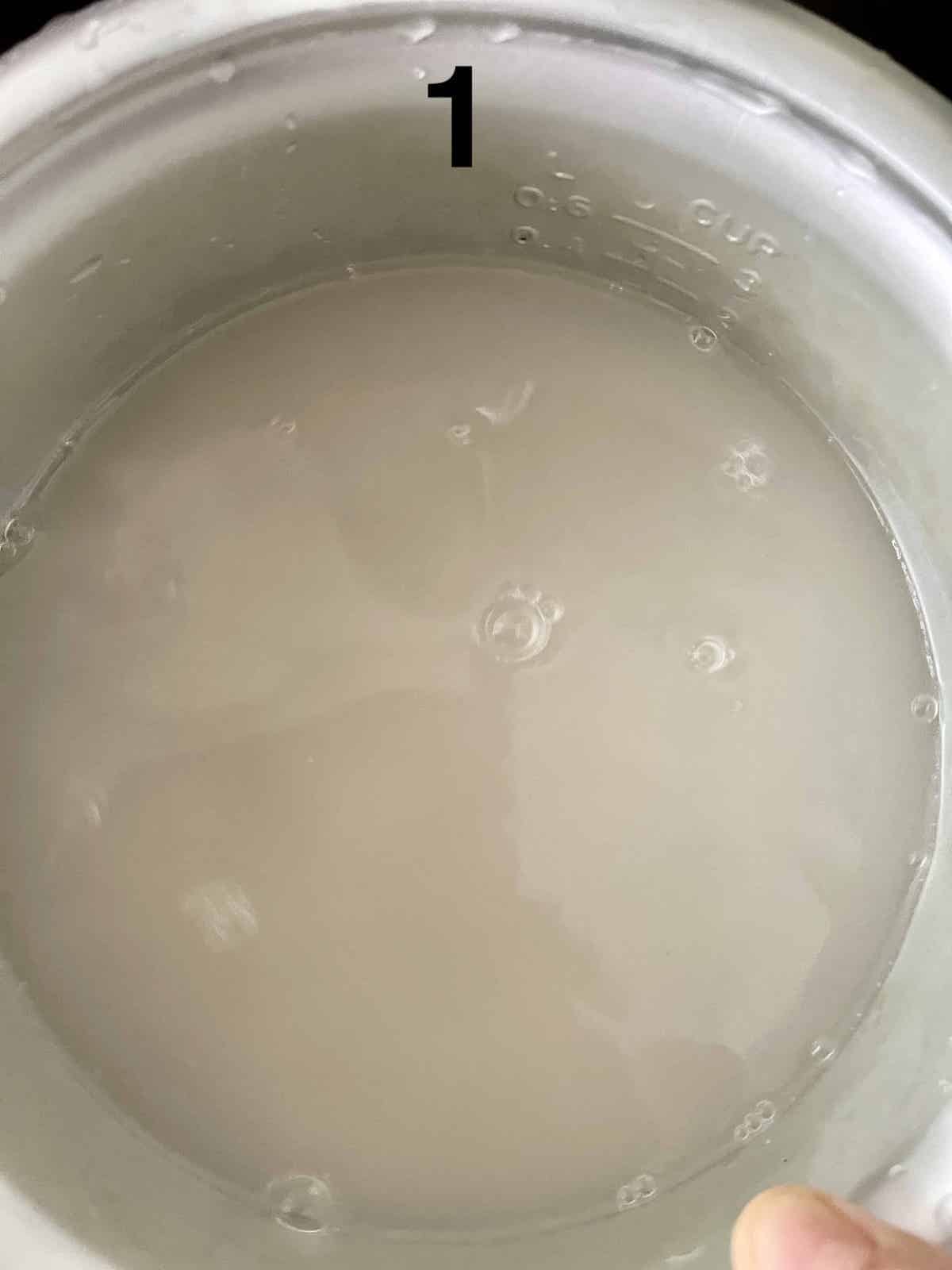
- Wash the rice till the water runs clear. Compare how cloudy the water is here compared to the 3rd rinse in the photo on the right.
Note: This will take at least 3 washes and is done to remove excess starch so that your cooked rice isn't gooey.
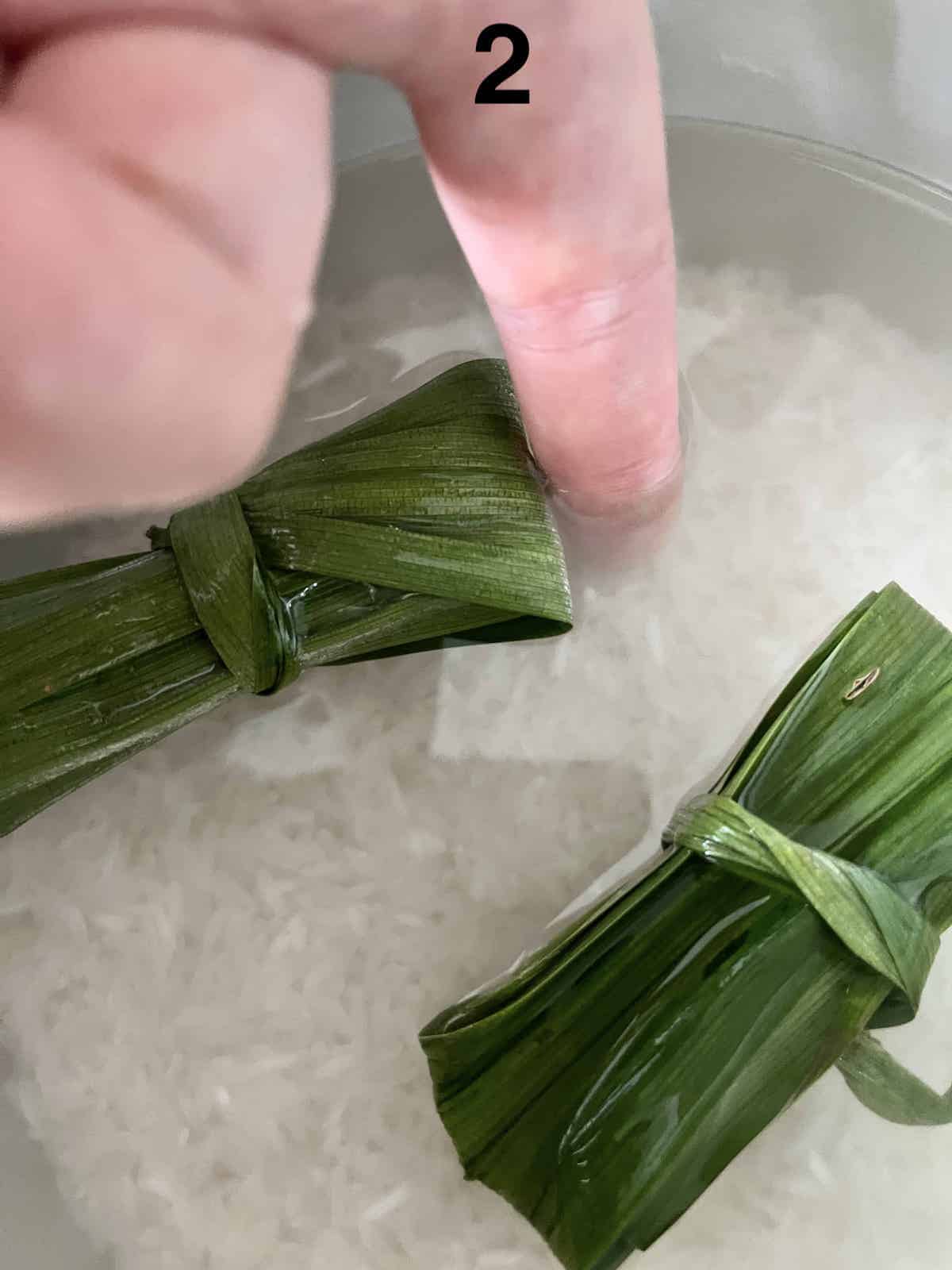
2. Add water up to the 1st line on your index finger. (This is the topmost line on your finger, when your hand is held such that the fingers are facing skywards.)
A 2nd method is to use the 1:1 ratio i.e. 1 Cup of water for every Cup of jasmine rice cooked in a rice cooker. Make sure the same cup is used to measure both.
For rice cooked on a stove, you may need a bit more water.
Alternatively, your rice cooker may have markings to indicate how much water to add.
For Fragrant White Rice
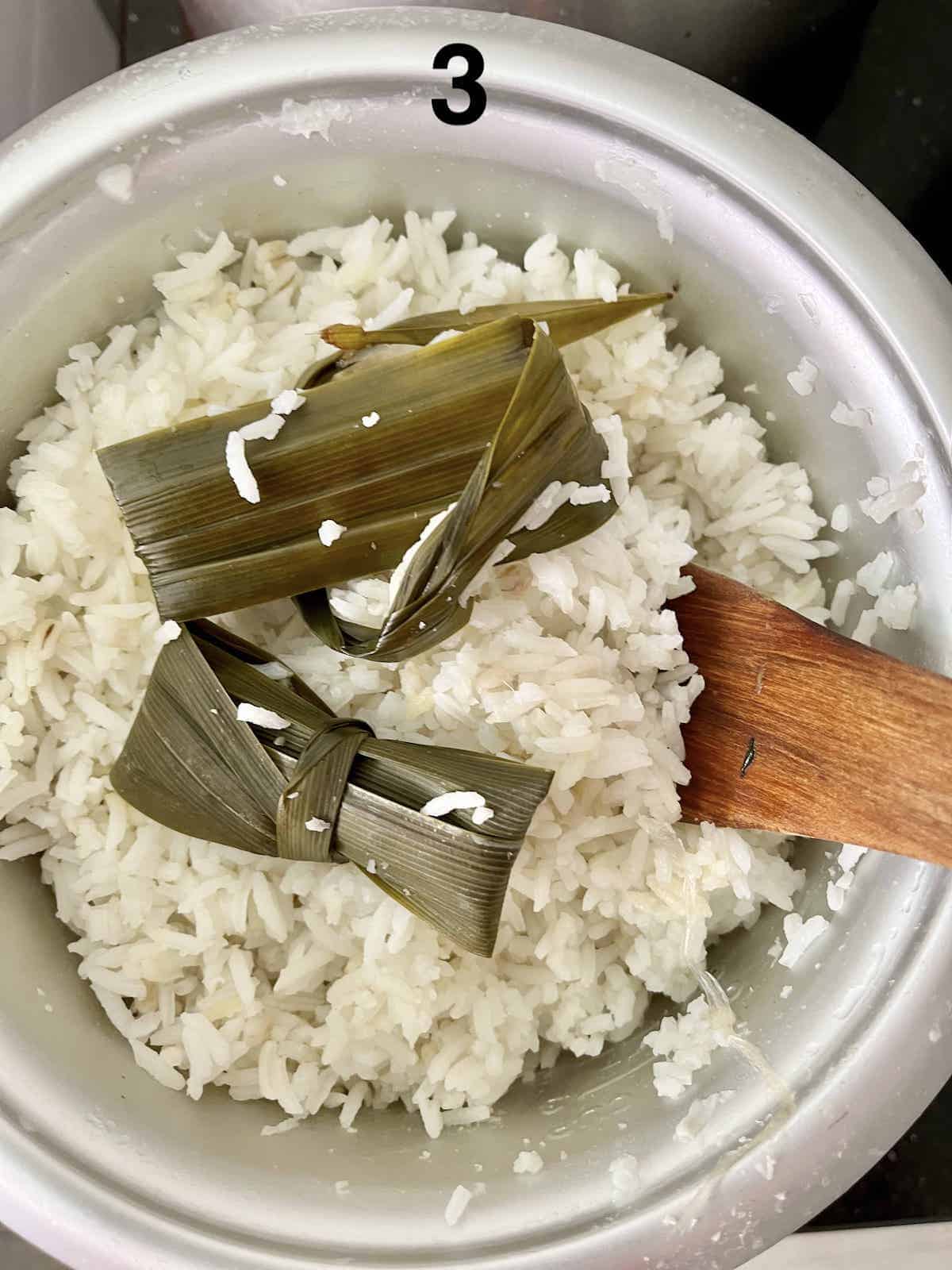
Method 1: Using a rice Cooker
- Crush the pandan leaves in your fist to release the fragrance then tie them into a knot.
- Add the washed rice, water and pandan to the rice cooker pot (as shown above.)
- Press the cook button.
- After the rice cooker has sounded (i.e. the rice has finished cooking), leave for 10 minutes before uncovering so that all the water can be absorbed.
- Remove the pandan leaves which can be added to compost or thrown away.
- Fluff the rice and serve.
For Green Rice
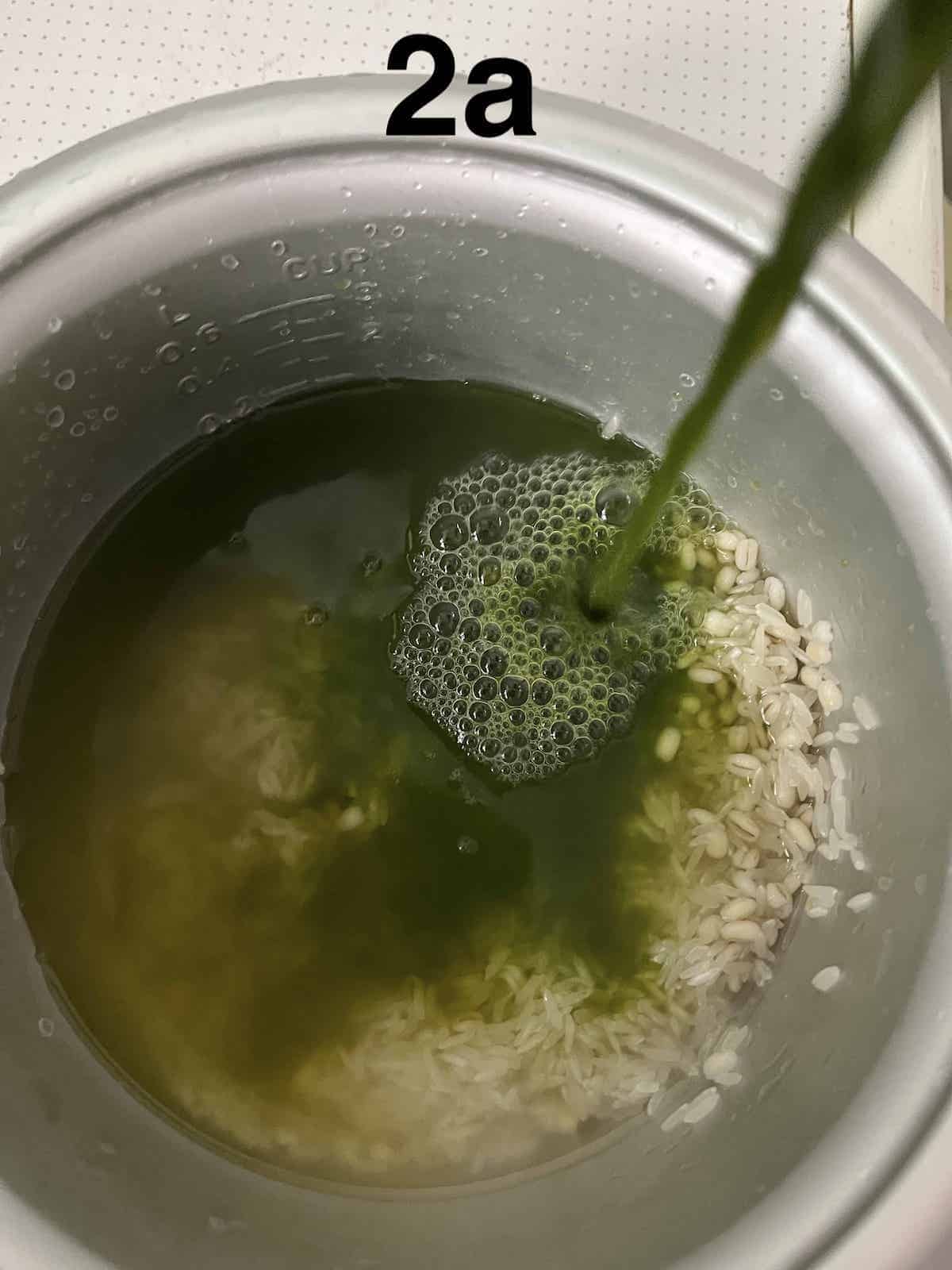
- Wash the rice as above. Next, add the rice and pandan juice to the pot till the level of the 1st line on your finger, as shown above. (Don't use pandan extract, which is more concentrated, or the rice will be bitter.)
- Mix in the coconut cream- I do not recommend leaving this out as pandan juice alone will give the rice a coconut-y but slightly grassy flavor.
- Press the cook button
- After the rice cooker has sounded (i.e. the rice has finished cooking), leave for 10 minutes before uncovering.
- Fluff and serve.
How to Store
Uneaten rice should be stored in the fridge as soon as possible (within 1 hour of cooking) as rice left at room temperature can lead to very bad food poisoning!
For more about safely storing rice and what to do with leftover rice, click here.
Expert Tips
Tip #1: Wash the rice thrice, or till the water is almost clear, to remove the excess starch and ensure the rice isn't gluey. The times in this recipes is based on using cold water, or room temperature water, and not hot water.
Tip #2: If making "lemak" rice, never use only coconut cream as it is too heavy for the rice to absorb. The coconut cream needs to be diluted with water or coconut water before adding it to the rice grains. If you want it
Tip #3: Pandan rice goes well with side dishes such as sunny-side egg, fried chicken, South East Asian curry, spicy tuna etc. Check out recipes for vegetarian South East Asian dishes here. Serve it on a washed banana leaf for an authentic South East Asian meal!
Recipe FAQs
When you use too much of concentrated pandan, such as pandan extract, it can taste a bit bitter! If you're worried about bitterness, stick to adding pandan leaves to your rice, instead of using pandan juice/ extract.
Using a rice cooker, we use a 1:1 ratio for rice to water. On the stove, more water is needed, about 1.5-2 Cups of water for every cup of rice. (Make sure the same cup is used to measure both!)
You can add a pinch of salt and other South East Asian herbs to the rice to make it more fragrant. For example, some people add ginger, shallots, bruised lemongrass stalks and garlic to the pandan and coconut milk when making Nasi Lemak Rice.
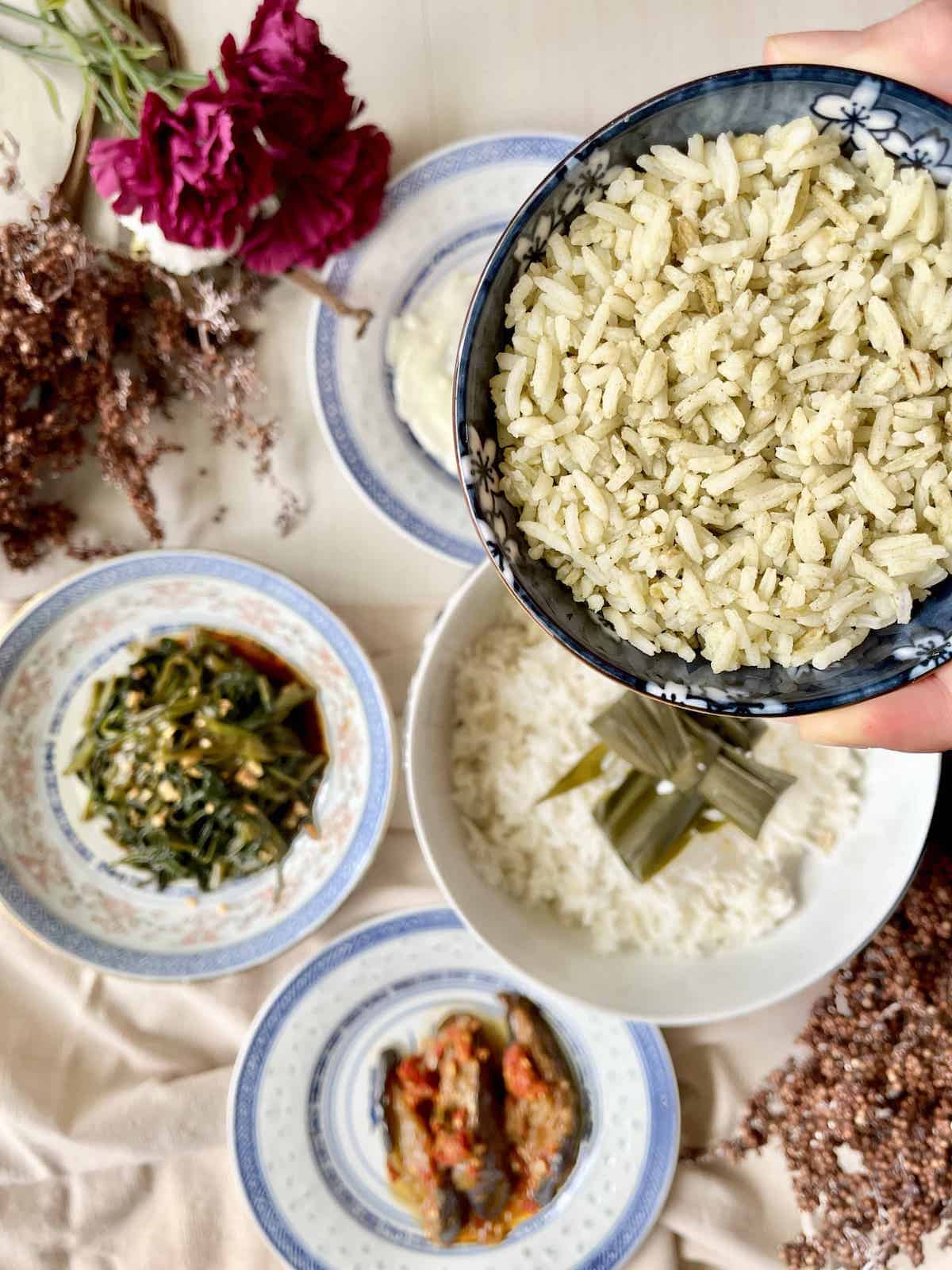
Suggested Accompanying Recipes
Enjoyed this easy Easy Pandan Rice Recipe? Please leave a 5-star 🌟🌟🌟🌟🌟rating in the recipe card below & if you REALLY liked this Nasi Pandan, a comment would make my week! Thank you and have a great day!
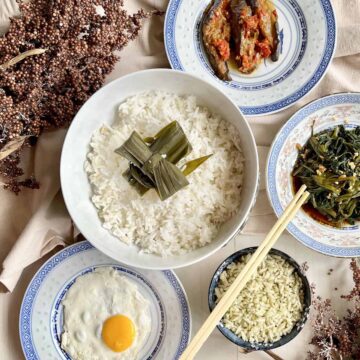
Pandan Rice
Equipment
- Rice cooker and heat-proof spatula Substitute: heavy bottom pot
Ingredients
White Pandan Rice
- 1 Cup Long-grain rice i used jasmine but you can also use basmati
- 1 Cup Water
- 3 Tablespoons Coconut Cream Optional, only if you want a richer rice. Not to be confused with coconut milk.
Green Pandan Rice
- 1 Cup Long-grain rice i used jasmine but you can also use basmati
- 1 Cup Pandan Juice Don't use pandan extract which will lead to a bitter rice
- 3 Tablespoons Coconut Cream NOT optional- without this, the rice will taste a little grassy as the pandan is much more concentrated here. Not to be confused with coconut milk.
- ¾ teaspoon salt
Instructions
Washing the rice
- Wash the rice till water runs clear to remove excess starch.
For White Pandan Rice
- Crush the pandan leaves to release the fragrance then tie them into a knot.
- Add the washed rice, water and pandan to the rice cooker pot. Add water up to the 1st line on your index finger. (This is the topmost line on your finger, when your hand is held such that the fingers are facing skywards.) (See Notes on alternative ways to measure the water.) Press the cook button.
- After the rice cooker has sounded (i.e. the rice has finished cooking), leave for 10 minutes before uncovering so that all the water can be absorbed.
- Remove the pandan leaves which can be added to compost or thrown away. Fluff the rice and serve.
For Green Coconut Pandan Rice
- Add the washed rice and pandan juice to the pot till the level of the 1st line on your finger. (Don't use pandan extract, which is more concentrated, or the rice will be bitter.)
- Mix in the coconut cream. Press the cook button.
- After the rice cooker has sounded (i.e. the rice has finished cooking), leave for 10 minutes before uncovering. Fluff and serve.
Notes
Note: the nutritional information is an estimate automatically calculated using the WPRM recipe maker and I am not responsible for its veracity.
Nutrition
Which Pandan Rice did you make? The white or green? Let me know in the comments!

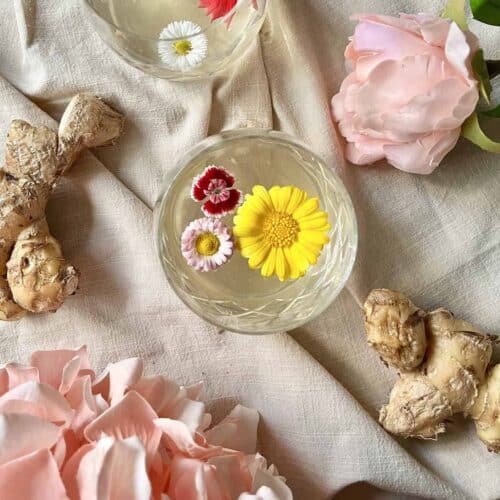
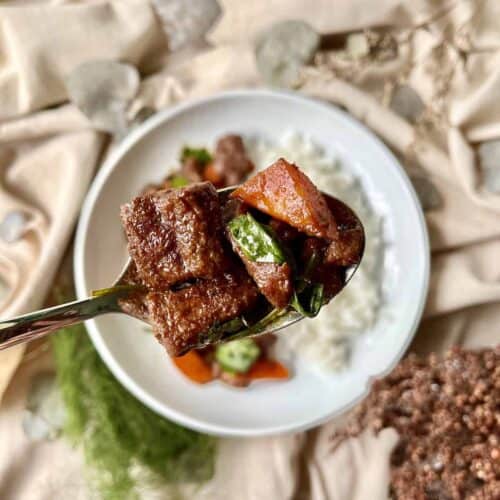
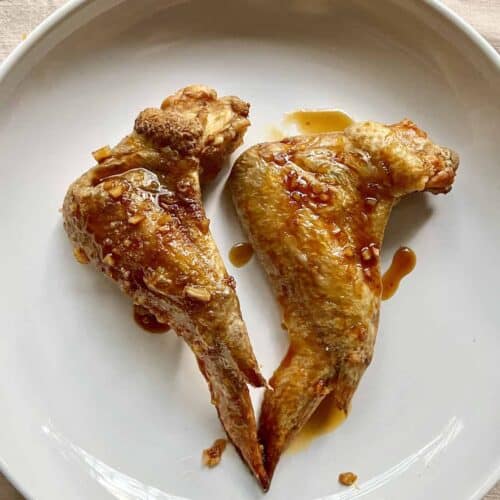
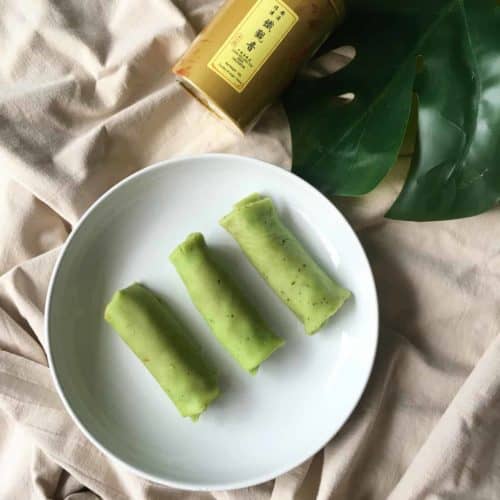
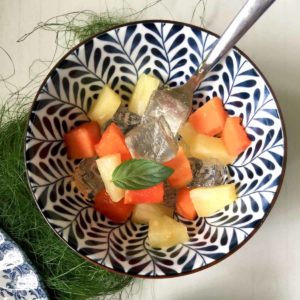
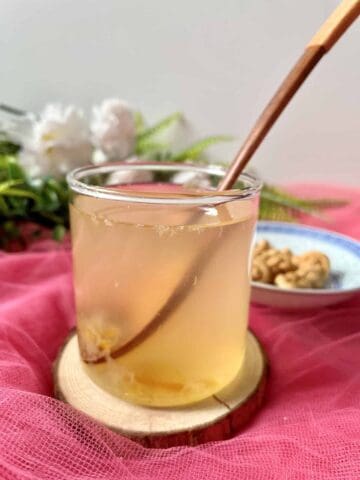
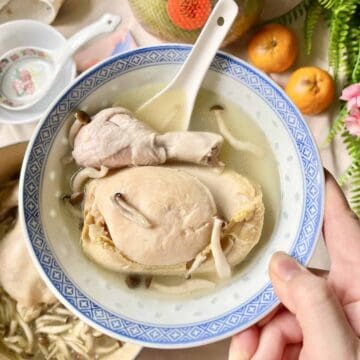
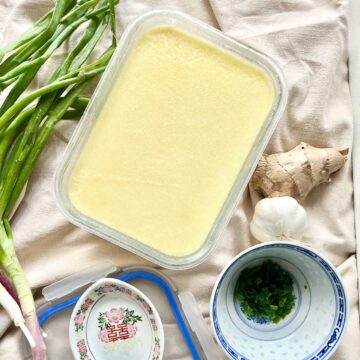
Comments
No Comments